Cloud kitchens are becoming the UK’s favorite way to feed a fast-moving population. In fact, according to reports, the country’s food delivery market is expected to hit US $18.9 million by 2030, growing at a CAGR of 17.1%. This growth clearly indicates the shift in how people consume food worldwide. Speed, convenience, and digital-first experiences are the center of it all.
These days, even big names are betting on this restaurant format. Rebel Foods, the world’s largest cloud kitchen operator, recently expanded into the UK by partnering with Reef Technology to bring global QSR brands to British consumers through delivery-only models. And, no doubt, they are going strong.
Intrigued? This guide covers everything you need to know about how to start cloud kitchen in UK. So stay rooted.
What Is a Cloud Kitchen?

A cloud kitchen (ghost kitchen, dark kitchen, or virtual kitchen) following cloud kitchen business models is a commercial cooking space optimized for preparing food meant exclusively for delivery or takeaway. There is no dine-in, signage, and often, no customer-facing storefront.
These are stripped-down, operations-first models built for speed, efficiency, and scale.
With food delivery platforms like Deliveroo, Uber Eats, and Just Eat handling the logistics and customer interface, more and more food brands are thriving without ever serving customers face-to-face.
How Does a Cloud Kitchen Work?
First, you don’t need to invest in front-of-house staff or dining aesthetics. All your focus goes into food quality, kitchen operations, and on-time delivery.
This also means your brand doesn’t need to be limited to one cuisine or concept. Many cloud kitchens run multiple brands from a single kitchen. For example, one kitchen could simultaneously run a fried chicken brand, a salad bowl brand, and a pasta brand under different names, all optimized for delivery. It’s flexible and, more importantly, scalable.
Still, it’s not a plug-and-play model. If your operations aren’t tight (if your food arrives cold, late, or messy), your reviews will tank fast.
Is the UK Market Ready for Your Cloud Kitchen?
Yes, but only if you do it right.
London and other urban hubs already see high demand for quick-service and delivery-first brands. Moreover, platforms like Kitch and Foodstars are helping cloud kitchens in the UK operate and scale effortlessly.
But here’s the catch: the competition is getting stiffer. Because it’s easier to launch a cloud kitchen than a full-service restaurant, the entry bar is naturally lower, thus, the competition.
INDUSTRY INSIGHT
| The UK is expected to have one of Europe’s highest cloud kitchen penetration rates by 2027 (following Germany). But with this surge will come hypersaturation. That means survival won’t depend on how fast you start but on how smartly you scale. |
Is Profit Guaranteed in a Cloud Kitchen Business?
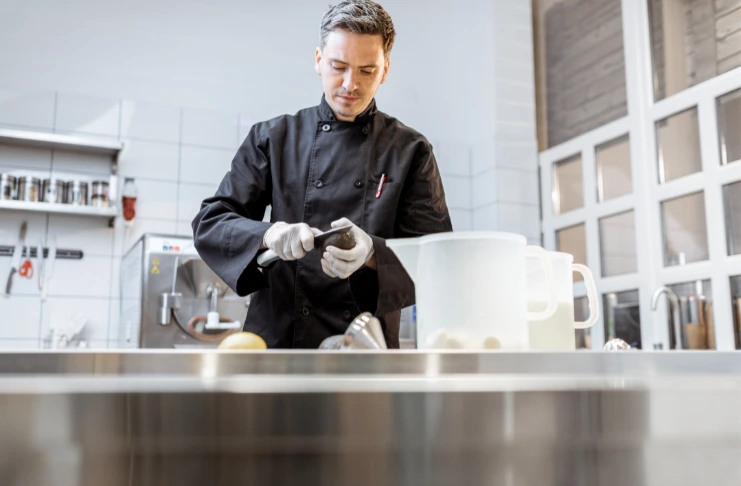
Whether your cloud kitchen business is profitable depends on your execution, operations, tech stack, and overall understanding of the business model.
For instance, Taster, a digital food brand operating cloud kitchens in London, Paris, and Madrid, scaled impressively within the last few years by building their brand around efficient food delivery, optimizing prep time to under 10 minutes, and relying on hyperlocal marketing.
On the other hand, even well-funded ventures like Travis Kalanick’s CloudKitchens have faced challenges, including recent workforce reductions and site closures to manage expenses.
You’ll find numerous examples of successes and struggles in the global cloud kitchen sector, each reinforcing one thing:
The UK market is primed for cloud kitchens, but not half-baked ones. Only restaurateurs who understand the delivery economy inside out will win.
Pros and Cons of Cloud Kitchen Business in the UK
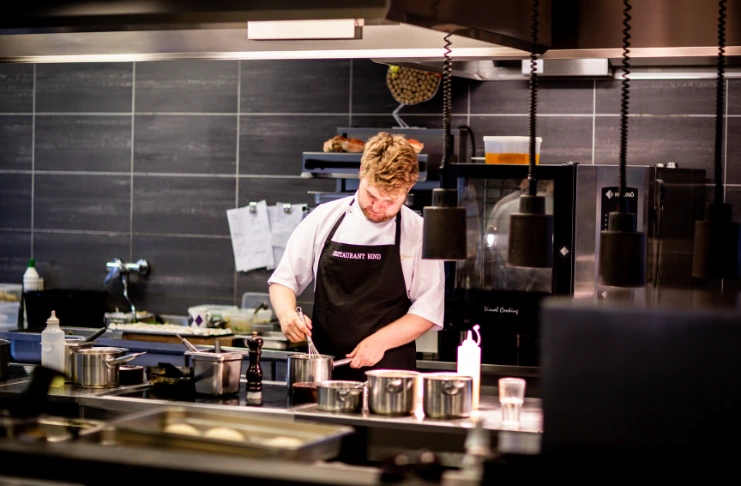
While the cloud kitchen model offers much flexibility, it presents a few challenges. Take a look at these:
The Upside
1. Lower Setup Costs
You’re not paying for prime real estate or designing a dining space. That instantly slashes your startup cost. In most cases, you can even operate out of a shared kitchen at a fraction of what a restaurant would cost you in rent and build-out.
2. Faster Launch Time
Here, your go-to-market timeline is much shorter because you’re not dealing with physical interiors or front-of-house hiring. You can go from idea to launch in just a few weeks.
3. Scalability
If your first brand works, you don’t need a new location to launch a second one. You can run multiple food brands under one roof and scale vertically. And since the whole model is digital-first, catering to online food orders, you can expand to new zones without starting from scratch.
4. Operational Efficiency
Every square foot of your space is geared towards one goal: cooking and dispatching food. There’s no downtime between lunch and dinner rushes, and every headcount is tied directly to order volume.
The Downside
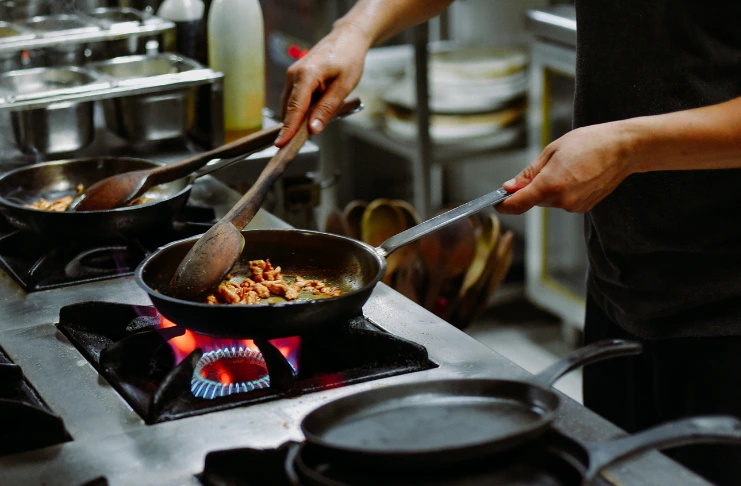
1. Platform Dependency
Most cloud kitchens rely heavily on food delivery services like Uber Eats and Just Eat. While they bring in orders, they also charge high commissions, sometimes up to 30%. This cost can eat into your margins fast if you don’t plan for it.
2. Limited Customer Connection
Without a storefront or dine-in option, you lose out on the personal connection that traditional restaurants offer. That makes brand loyalty harder to build, and customer retention becomes all about performance: speed, packaging, and reviews.
3. High Competition
The entry barrier is low, which means the market is saturated in some zones. Standing out requires more than good food. You’ll need strong branding, tight operations, and a smart marketing plan.
4. Logistics Challenges
In a cloud kitchen business setup, you’re at the mercy of third-party delivery agents. Delays, wrong addresses, and poor handling are risks you can’t always control, but your brand will take the blame for them.
How to Start a Cloud Kitchen in the UK: A Step-by-Step Breakdown
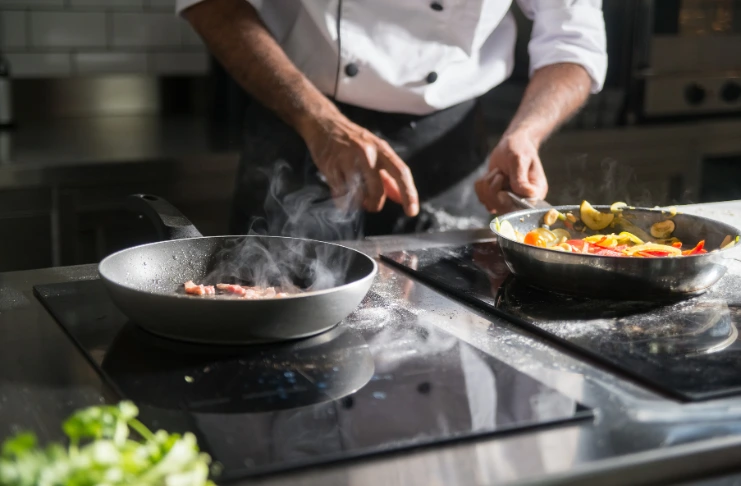
Setting up a cloud kitchen in the UK isn’t overly complex, but it’s not plug-and-play either. Here’s what it looks like:
Define Your Cloud Kitchen Format
Start by identifying what kind of cloud kitchen you want to operate. This will further influence your costs, legal obligations, target audience, and more. In the UK, you typically have three choices:
- Independent kitchen: You lease a commercial space and set up your own facility. You handle everything from licensing, compliance, and equipment to staffing.
- Shared kitchen: You rent a slot in an existing commercial kitchen. Providers like Karma Kitchen or Encore Kitchens offer fully licensed, equipped spaces with flexible terms. It is best for testing new concepts or when starting with limited capital.
- Aggregator-run kitchens: Platforms like Deliveroo Editions or Uber Eats’ virtual kitchen partnerships provide you with kitchen space and built-in delivery demand but at the cost of control and branding.
Choose the right format upfront to avoid any unnecessary chaos down the road.
Choose the Right Location

Even without dine-in, location matters for reaching potential customers . You need to be as close as possible to your core delivery radius—ideally within 2–3 miles of your target audience. That ensures quick delivery times, which will, in return, impact your customer satisfaction and platform ratings.
When checking out the space, go through zoning regulations, council policies, and noise or waste disposal laws. Some boroughs in London, for example, are tightening regulations around late-night delivery kitchens. If you’re setting up in places like Camden, Islington, or Southwark, local council permissions and resident concerns may influence what’s possible. Always check with the planning department before signing a lease.
Register and License Your Business
Before anything else, register your business with Companies House. Most cloud kitchens register as private limited companies. Then:
- Notify your local council about your food business at least 28 days before you begin trading. This is mandatory under UK law.
- Apply for a Food Hygiene Rating through the Food Standards Agency (FSA).
- Get Employer’s Liability Insurance and Public Liability Insurance. These are standard for any business with staff and customer interaction.
- Check if your business needs planning permission, especially if you’re converting a space that wasn’t previously used for food service.
Failure to comply here may lead to serious fines or shutdowns. The FSA is strict about food safety in delivery kitchens, and delivery platforms won’t onboard you without proof of hygiene compliance.
Design a Lean but Efficient Menu
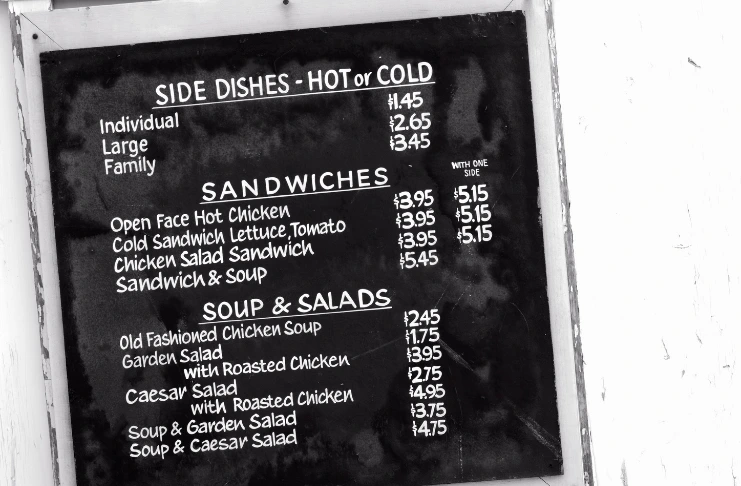
Cloud kitchens thrive on speed and consistency. That starts with a well-structured menu. Limit your SKUs. Focus on 8–12 dishes that are easy to prepare, share ingredients, and maintain quality in transit.
Every menu item should be profitable, scalable, and operationally simple. That means:
- Minimal last-minute assembly
- No complex garnishes or delicate plating
- Consistent cook times
Also, think about packaging during the R&D phase. You don’t want to create beautiful food that arrives crushed or soggy.
Set Up the Kitchen
If you’re leasing an empty unit, you’ll need to invest in:
- Stainless steel worktops
- Commercial ovens or fryers (gas or electric)
- Refrigerators and cold storage units
- Extraction systems and fire suppression
- Commercial dishwashers
- Dry and chilled storage
Shared kitchen providers handle this for you, but if you’re going solo, your setup must meet HACCP standards (Hazard Analysis and Critical Control Points).
Also, make sure your kitchen layout allows for smooth prep-to-pack-to-dispatch flow. Delivery delays often go hand-in-hand with poor kitchen design.
Hire the Right Team
Unlike restaurants, cloud kitchens run lean. Most UK operators start with 2–3 people: One experienced chef or kitchen supervisor, one kitchen assistant, and one part-time prep/delivery support staff.
You can expand your team size as you scale, but early on, you want a tight crew that knows how to hustle during peak hours. Everyone must be trained in food hygiene (Level 2 Food Safety at a minimum).
Choose Delivery Partners Strategically
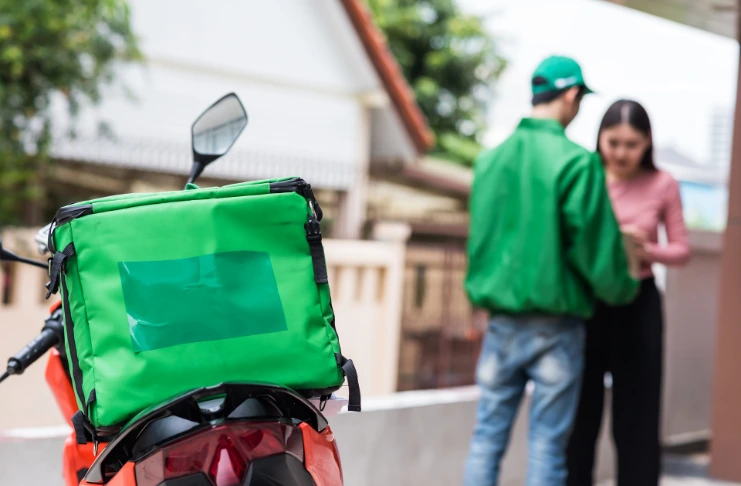
In the UK, your three major options are Uber Eats, Deliveroo, and Just Eat. All offer exposure but take commissions ranging from 25% to 35%.
To get started, you’ll need to:
- Create a business profile on their platforms
- Submit hygiene rating certificates.
- Upload photos, menus, hours of operation, etc.
- Use their POS systems or integrations (like Deliverect or Otter)
For more control over profits, consider building a direct-order website through tools like Slerp. Combine that with your own delivery fleet or partners like Stuart, Gophr, or Zedify.
Don’t Make Packaging an Afterthought
Packaging is part of your brand experience. Use containers that are leak-proof, eco-conscious, and stackable. Your food has to survive a 20-minute ride and still make a good impression.
To improve recall, add custom labels, QR codes, or even a simple brand message. It’s a small cost, but goes a long way in building loyalty.
Go Live with a Launch Plan
Launching your cloud kitchen in the UK isn’t just switching on your delivery app. You need a rollout strategy. At the very least:
- Run platform promos in your first 30 days (e.g., “£5 off on your first order”)
- Launch an Instagram account and post behind-the-scenes videos or packaging shots
- Partner with micro-influencers in your postcode
- Use Google My Business to show up in local searches
Early reviews on platforms can make or break your ranking. So, be careful.
How Much Does It Cost to Set Up a Cloud Kitchen in the UK?

Though there’s no single price tag because costs will vary depending on your location, model, and ambition, you may expect these:
Private Kitchen Setup (£20,000–£55,000+)
For standalone kitchens, choosing a cost-effective approach is crucial :
Rent: £1,200–£4,000/month (higher in central London)
Equipment: £10,000–£30,000 (can save with refurbished units)
Licensing & Compliance: £500–£1,200 (includes fire safety, insurance, hygiene training)
Renovation & Fittings: £5,000–£15,000
POS & Tech Setup: £500–£2,000
Packaging & Branding: £300–£1,000
Initial Inventory: £1,500–£3,000
Shared Kitchen Setup (£5,000–£10,000)
Ideal for faster launches with less capital:
Monthly Rent: £1,200–£3,000 (includes utilities, waste management, and other overhead costs)
Deposit & Onboarding: £1,000–£3,000
Licensing & Insurance: £500–£1,200
POS & Delivery Integrations: £500–£1,500
Starter Inventory & Packaging: £1,500–£3,000
Hidden Costs
Beyond setup, several other expenses can quietly chip away at your margins. For example, delivery platforms like Uber Eats may charge penalties for delayed orders or customer complaints.
Food waste is another issue, especially during low-demand periods or while testing new menus. Equipment wear and tear means occasional repairs or replacements, which aren’t always predictable.
Then, there are order refunds, platform commissions, and compliance-related revisit fees if your kitchen fails an initial health inspection.
Conclusion
Starting a cloud kitchen in the UK involves some serious hustle, compliance, and execution. You’ll need to think like a chef, marketer, and operations lead every single day. So, only if you are on board with the idea of running your own cloud kitchen, roll up your sleeves and get in.
Frequently Asked Questions
1. How do I open a cloud kitchen in the UK?
To open a cloud kitchen in the UK, you must register your business, notify your local council, rent a certified kitchen, follow food safety laws, and list on delivery platforms like Uber Eats or Deliveroo.
2. Is cloud kitchen profitable in the UK?
Yes, cloud kitchens are profitable in the UK if run efficiently. Most earn 15–25% margins, especially with multi-brand setups and direct orders.
3. Is cloud kitchen legal in the UK?
Yes, as long as you register with your council, meet hygiene standards, and pass inspections.
4. How to start a cooking business in the UK?
Register as a food business, take a hygiene course, get inspected, and secure insurance. This applies to both home-based and commercial kitchens.
5. Can I open a cloud kitchen in the UK?
Yes, anyone can open one if they meet regulatory requirements. You don’t need a storefront or dining area, just a certified kitchen, compliance paperwork, and a delivery strategy.
6. How to open a ghost kitchen in the UK?
It is the same as a cloud kitchen: get a licensed kitchen, register with the council, meet hygiene laws, and go live on delivery apps.
7. Do ghost kitchens exist in the UK?
Yes. In fact, the UK has seen rapid growth in ghost and cloud kitchens since 2020. Major food hubs like London, Birmingham, and Manchester are hotspots for delivery-only concepts.
8. How many cloud kitchens are there in the UK?
There’s no official public registry, but industry analysts estimate that the UK had over 750+ cloud kitchens by late 2024, with London hosting more than 60% of them.
9. How to start cloud kitchen in UK?
To start a cloud kitchen in the UK, register your food business with the local council, find a licensed commercial kitchen, meet hygiene and safety regulations, get insurance, and set up delivery channels through platforms like Deliveroo or Uber Eats.
10. How many CloudKitchens are there in the UK?
If you’re referring to CloudKitchens, the company backed by Uber co-founder Travis Kalanick, its UK footprint is still niche but growing. As of early 2025, the company operates in select London zones and is expanding in partnership with local restaurateurs.
11. How much do cloud kitchens cost?
Anywhere from £15,000 for a basic setup to £50,000+ for multi-brand models.
12. How much does it cost to put in a new kitchen UK?
Domestic kitchen (home use): £5,000–£15,000
Commercial/Cloud kitchen: £10,000–£50,000 depending on scale and compliance needs.
13. How much does a commercial kitchen cost in the UK?
Commercial kitchens for delivery-only brands typically cost:
Shared kitchen (monthly): £1,500–£2,500
Private leased unit: £3,000–£5,000/month
Setup (equipment, licensing): £10,000–£25,000 one-time





